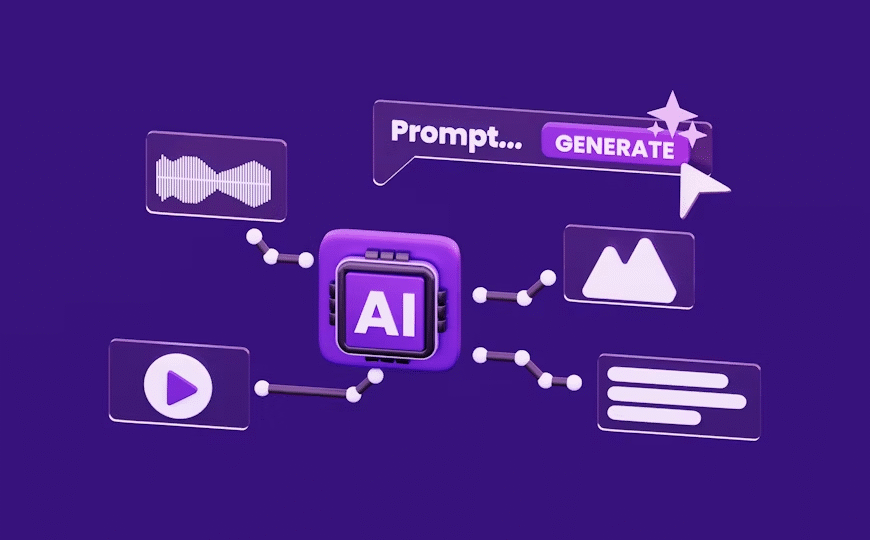October 18, 2025 | by Rayhan

Generative Engine Optimization (GEO) is redefining what it means to rank, appear, and convert in the era of AI-driven discovery. Traditional SEO was built for search engines; GEO is built for generative engines — like ChatGPT, Gemini, Perplexity, and Claude — that summarize, synthesize, and surface answers directly to users.
At Digits Marketer, we pioneered the GEO Framework to help brands transition from search visibility to AI visibility. This article unveils seven strategic frameworks that turn your content, data, and brand into AI-ready assets designed for generative discovery.
Generative Engine Optimization is the process of optimizing digital assets — text, data, and brand context — so they are easily understood, referenced, and surfaced by generative AI systems. Instead of optimizing solely for Google’s algorithms, GEO ensures your brand is indexed and cited by AI models that power next-generation search experiences.
In essence, GEO is to generative engines what SEO was to search engines.
Why it matters: As generative AI systems replace traditional search, brands that fail to optimize for AI visibility risk disappearing from digital relevance altogether.

Digits Marketer developed the GEO Visibility Matrix to help practitioners map their brand’s readiness across three layers of generative visibility:
| Layer | Focus | Optimization Objective |
|---|---|---|
| Content Layer | Natural language and structured data | Train AI systems to interpret your brand’s context accurately |
| Entity Layer | Knowledge graphs, authorship, and brand entities | Establish brand authority within AI knowledge networks |
| Experience Layer | Prompt visibility, AI snippets, conversational presence | Ensure your brand is the generative answer — not just a reference |
Each layer requires unique optimization approaches, from entity linking and data structuring to prompt-trigger engineering.

Generative engines thrive on contextual clarity. Unlike search crawlers, they infer meaning through semantic relationships. Your goal is to make your brand linguistically and structurally interpretable to AI models.
Mini case study: A SaaS brand implemented entity-based schema and saw its product descriptions cited by ChatGPT in AI-generated comparisons within 60 days.
GEO emphasizes brand-as-an-entity visibility. Generative AI models rely on knowledge graphs (like Google’s KG, Wikidata, or internal LLM embeddings) to validate authority. To dominate this layer:
Mini case study: An agency implemented entity-driven authorship strategies and saw its brand surface in Perplexity summaries under “Top SEO Frameworks 2025.”
Generative engines extract, compress, and synthesize — not just index. Content that is summarizable and citability-optimized ranks higher in AI answers.
Apply these principles:

Beyond on-page content, GEO requires Generative Experience Engineering (GEE) — designing how AI systems present, quote, and attribute your brand.
Mini case study: An e-commerce brand used GEE to optimize FAQs. Within weeks, Perplexity began citing its sizing guide in apparel-related AI answers.
In the GEO landscape, prompts are the new keywords. Conversational Trigger Optimization identifies the natural language queries that activate your brand’s appearance within AI responses.

Generative systems constantly learn and evolve. To maintain GEO performance, brands must monitor AI outputs and retrain their visibility loops.
Learn more about Digits Marketer’s AI Visibility Optimization services.
Finally, operationalize GEO through technology integration. Digits Marketer recommends the following stack for enterprise-grade GEO execution:
Brands that systematize GEO can track and influence their generative visibility — much like SEO dashboards track organic performance.

Generative Engine Optimization (GEO) is the process of optimizing digital assets to be understood, cited, and surfaced by AI systems like ChatGPT, Gemini, and Perplexity — ensuring your brand stays visible in AI-generated answers.
SEO optimizes for search algorithms; GEO optimizes for language models that summarize and generate. GEO focuses on structured data, entity authority, and AI-friendly content formats.
Generative engines are already replacing search for millions of users. Early GEO adoption ensures brands don’t lose discoverability as AI-driven interfaces dominate digital attention.
Track AI citations, brand mentions in LLM outputs, and visibility in generative results from ChatGPT, Gemini, and Perplexity. Digits Marketer provides GEO visibility audits and benchmarking dashboards.
Absolutely. GEO builds upon SEO — extending it into generative environments. Strong SEO foundations support stronger GEO performance.
Generative Engine Optimization is not a trend — it’s the next evolution of organic visibility. Brands that master GEO today will dominate tomorrow’s AI-driven discovery landscape.
At Digits Marketer, we’re not just predicting this future — we’re building it. Our proprietary GEO Framework helps brands translate traditional SEO signals into generative visibility assets that AI systems understand, respect, and amplify.
Ready to future-proof your AI visibility? Contact Digits Marketer to implement your custom GEO strategy today.
Written by Tamer Bader-Eldin — AI Marketer, GEO Optimizer, and thought leader at Digits Marketer. Tamer specializes in Generative Engine Optimization and AI-driven visibility strategies that help brands dominate both search and generative discovery platforms.